Bohemian Waxwings (Bombycilla garrulus) (24 January 2005)
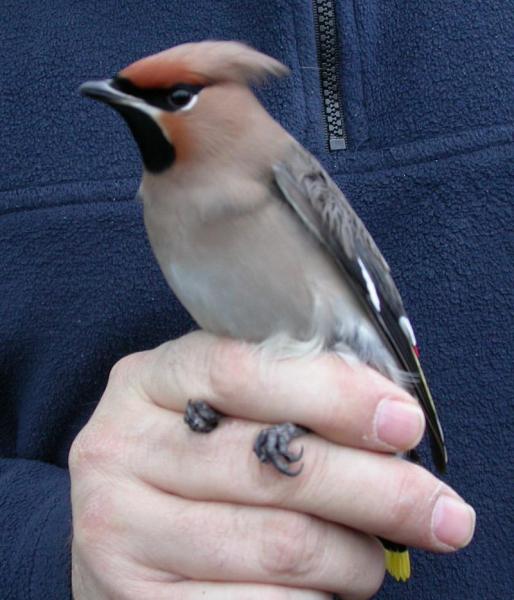
.jpg)
As many people will already know, there has been a major influx of (Bohemian) Waxwings Bombycilla garrulus into Britain this winter (2004-2005), involving many thousands of birds. Flocks of birds started to arrive in Scotland in October 2004 and then trickled south. One flock in Forres, Morayshire numbered around 1500 birds. In December flocks of several hundred birds were being seen in Bury and Atherton (Lancashire) with smaller groups being reported from many other sites in the North West of England. On the 1st January 2005 I found a group of 33 birds in the centre of Warrington, Cheshire, close to one of my ringing sites. Over the next couple of weeks the birds were being seen occasionally, with up to 40 birds reported in the flock. I decided that it would be worth an attempt at ringing some of these birds. By the 15th January the flock had suddenly increased to around 200 individuals.
The site in Warrington is a small area of grass with ten to a dozen Rowan Sorbus aucuparia trees, mostly red, but also a few yellow. The berries are jealously defended by Mistle Thrushes Turdus viscivorus. It is a public site, with a fairly busy road on one side and residential streets on two others. The fourth backs on to a block of 'sheltered accommodation' for elderly people, whose warden was happy to allow mist-netting in their grounds. The birds were very unconcerned with people but were more wary about traffic, particularly heavy vehicles (lorries and 'buses). The birds were feeding in the trees in the grounds of the block and a 6m mist net was sited in front of the yellow Rowan trees here.
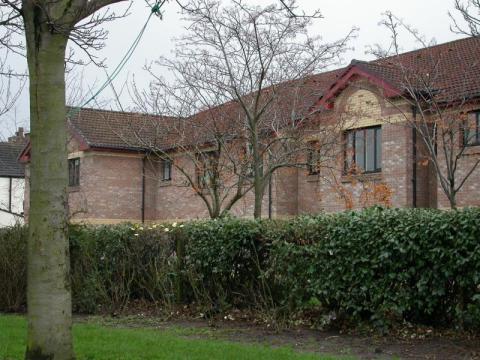
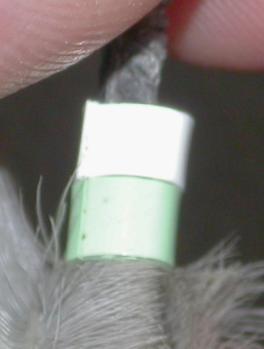 Very quickly 14 birds were caught. They dropped over the net
to feed and were actually caught as they flew up to the high trees in the front
of the picture. It was nice to see that one of these birds was already wearing a
BTO ring. In the Group's 50-year
history, MRG has only ringed 4 Waxwings previously and never had a control,
so this was ground-breaking news for us.
Very quickly 14 birds were caught. They dropped over the net
to feed and were actually caught as they flew up to the high trees in the front
of the picture. It was nice to see that one of these birds was already wearing a
BTO ring. In the Group's 50-year
history, MRG has only ringed 4 Waxwings previously and never had a control,
so this was ground-breaking news for us.
Another three sessions resulted in a further 11 birds in the hand, with another control, this time a colour-ringed bird, taking the total to 23 new and 2 controls.
The birds were of mixed ages and sexes and a series of photographs were taken to show ageing and sexing criteria.
The wing feathers of most passerine birds have the same pattern for both adults and juvenile birds. Waxwings are unusual in that the primary feathers of adult and juvenile birds are different and can be used in ageing the birds. Adult birds have white on the inner web with bright yellow on the outer web making a ‘V’ angle, whereas juvenile birds have only a pale yellow outer web:
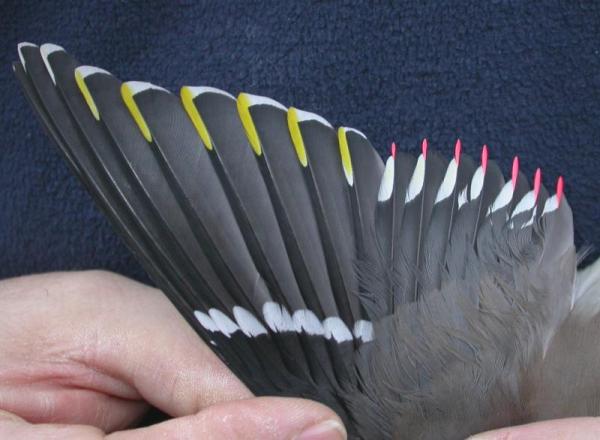
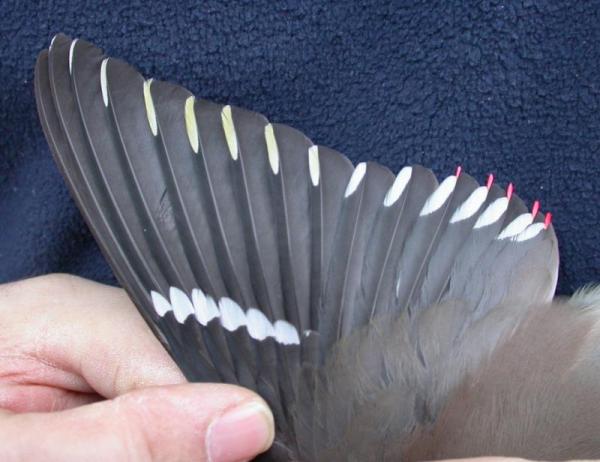
According to Svensson's Identification Guide to European Passerines (1992), several criteria can be used for sexing birds. The number and length of the pink, waxy droplets on the secondaries and tertials are useful, but there is overlap. Adult males have 6-8 with wax, with the longest measuring 6-9.5mm; adult females number 5-7 with the longest being 3-7.5mm. For immature birds, males have 4-8 with the longest 3.5-5.5mm and females from 0-5 with the longest being up to 3.5mm. The yellow tip to the tail feathers differs between the sexes. The males have a more extensively yellow tipped tail, with the length of the yellow on the first (central) tail feather 5.5-8.5mm on adults, and on the fifth rectrix 7-11mm. The corresponding numbers for females are 4-6mm and 5-8mm respectively. The following two adult tails illustrate the difference:
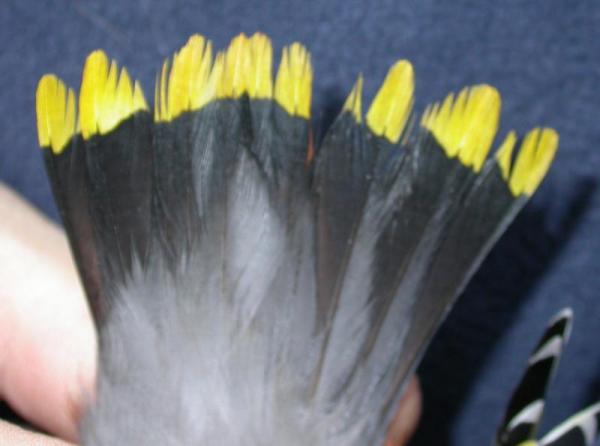
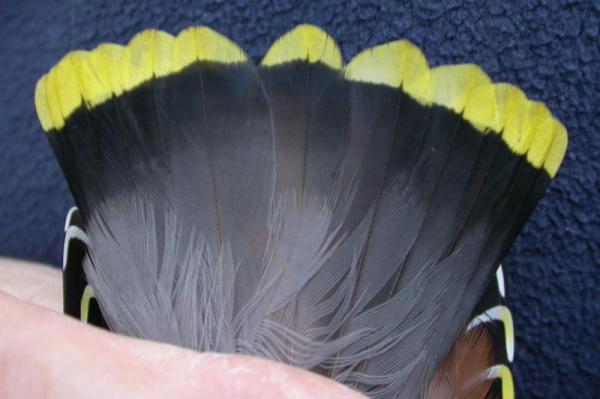
The black on the throat of birds can also be used as a sexing feature. Males have a jet-black throat-patch with a sharper border than the females. The black of the throat on the females fades out through dark grey to a less distinct border with the breast.
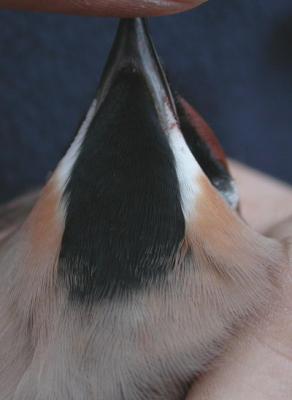
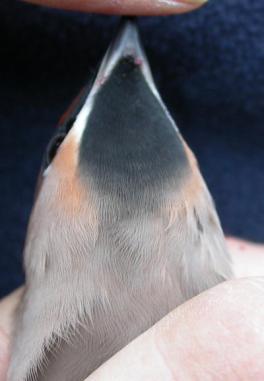
Owing to the overlap in various sexing criteria, each one should not be used in isolation, but in combination with the others. Even then, some birds may not be sexable.
Rowan berries appear to be one of the favourite foods of Waxwings, and they must be good for them, as all the birds processed carried some fat in the tracheal pit. Using the ESF 8-point scale, all birds had a fat score of 1 or 2, with weights in the range 58.0 – 64.5 g.
In one of the visits to the site, it was possible to read the colour ring combination on another two birds. Although the birds were moving regularly, patience was rewarded. So, in total, two ringed birds were caught, and two colour-ringed birds were seen, and all four turned out, as expected, to have come from Scotland. The first control had been ringed on 31 October 2004 in Forres, Morayshire. The second control and the colour-ringed birds were all ringed on 30 October 2004 at Inverurie, Aberdeenshire. One of these had previously been resighted in Burnley, Lancashire on 10 December 2004. At the time of writing over 400 birds have been colour ringed in the UK this winter, mostly in Scotland, but 28 birds have also been colour ringed in Sheffield, and several birds from Aberdeen have been sighted there. From this impressive total, an even more impressive 222 birds have subsequently been resighted / recaptured. There cannot be many species with such a high recovery rate in the UK. There have already been many interesting movements of these birds and members of the public as well as ringers are helping to piece together the movements of individuals. I would encourage people to check any Waxwings for colour rings and contact Raymond Duncan , who will pass on details of the birds' movements: he produces an update e-mail which he sends out to contributors.
Many thanks to Raymond for permission to use the information, from which we have used
DMAP to produce the following map of a selection of the longer distance movements, which graphically shows the roughly north-to-south track through Britain.
There is another MRG connection as the most northerly-ringed bird on this map, from Shetland, was ringed by Dave Okill, an early member of Merseyside Ringing Group before his move north in 1976 and still a regular visitor to ring with MRG. His ringed Waxwing from Shetland was caught and colour-ringed in Inverurie, then seen in Aberdeen, and has recently been re-sighted in Sheffield, over 800 km south.
By the time of the last visit the Warrington flock had swelled to around 300 individuals. The trees were all but stripped of berries and, owing to work commitments, no further attempts could be made at this site. The members of the public, photographers and birders alike were very appreciative of the opportunity to see these delightful birds in the hand.
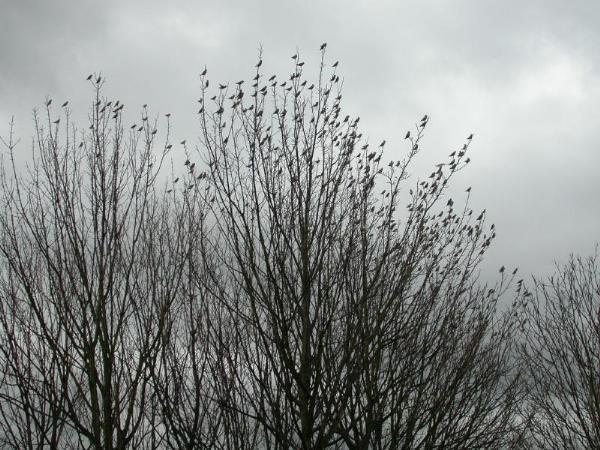
To end with
, here is a challenge to keen birdwatchers. The final two photographs below show a first-year Waxwing, followed by an adult bird. In these images it is easy to see the single line of yellow down the primaries of the juvenile bird. There is no white angle which would indicate an adult. This is an easy feature to see in the field and could be used by really observant birdwatchers to get an idea of the ratio of juveniles to adults in a particular flock (after you have checked for colour-rings, of course!).
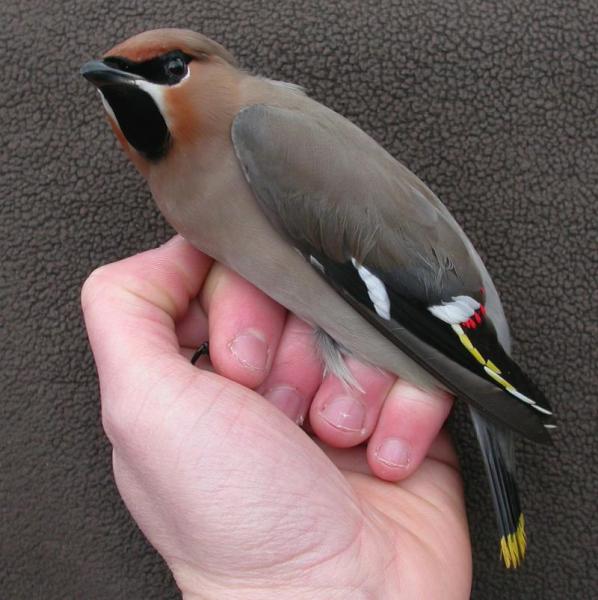
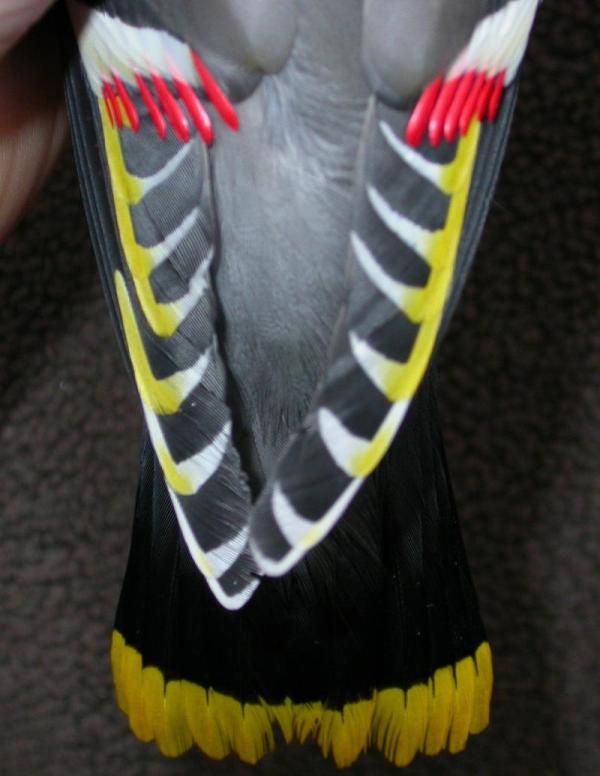
Kieran Foster.